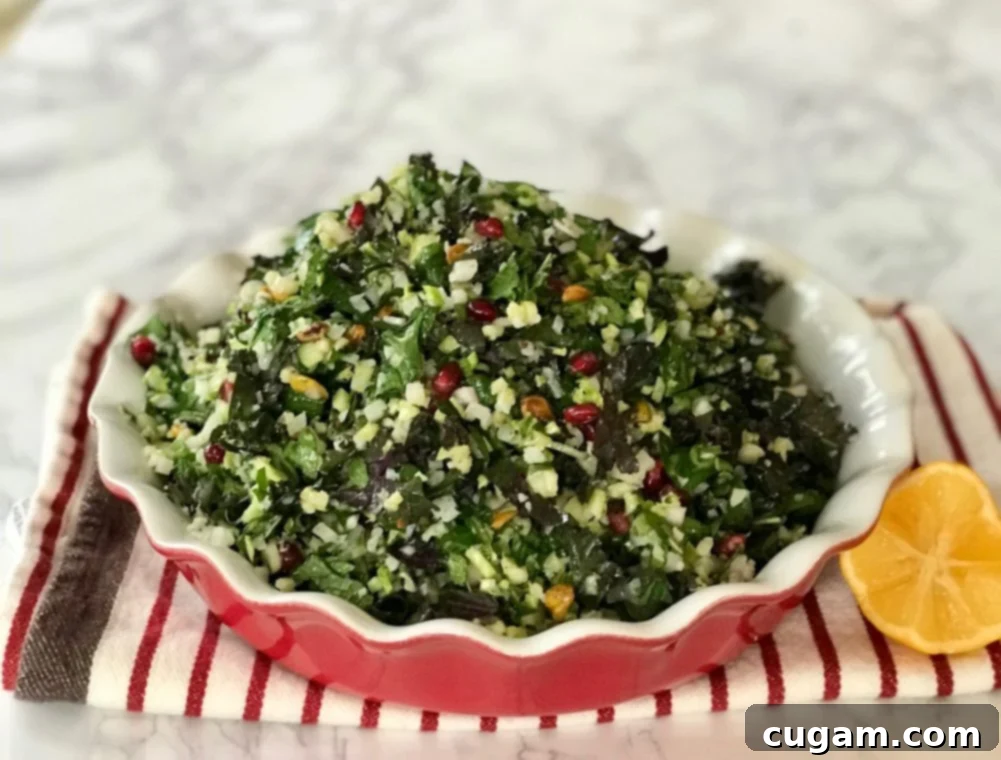Delicious Grain-Free Winter Tabbouleh: A Wholesome Riced Cauliflower & Broccoli Salad
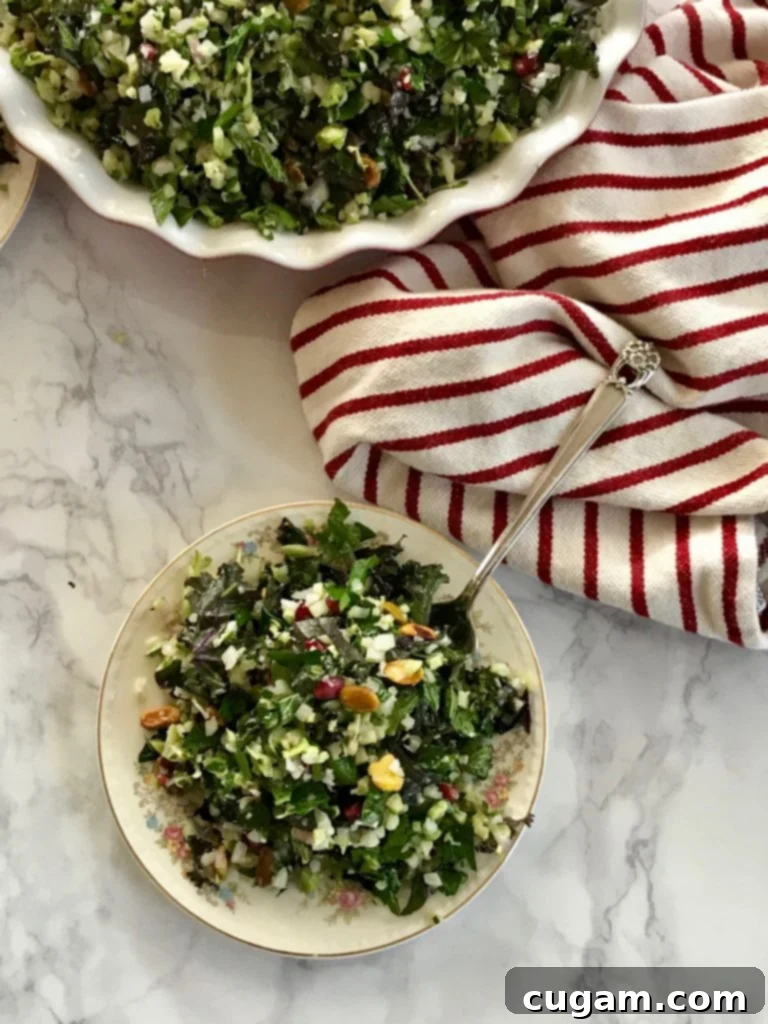
As the chill of winter lingers, and Punxsutawney Phil predicts more weeks of cold, many of us find ourselves yearning for the vibrant flavors and lighter meals of spring. While a comforting bowl of warm soup always has its place, there comes a time when our palates crave something fresh, zesty, and utterly revitalizing. It’s time to shed the heavy winter fare and welcome more salads into our rotation. And what better way to do that than with a truly exceptional winter salad? This grain-free tabbouleh, crafted with a delightful blend of riced cauliflower and broccoli, is precisely the dish to invigorate your senses and bring a much-needed burst of freshness to your table. It’s not just a salad; it’s a commitment to brighter, healthier eating, even when the weather outside is anything but.
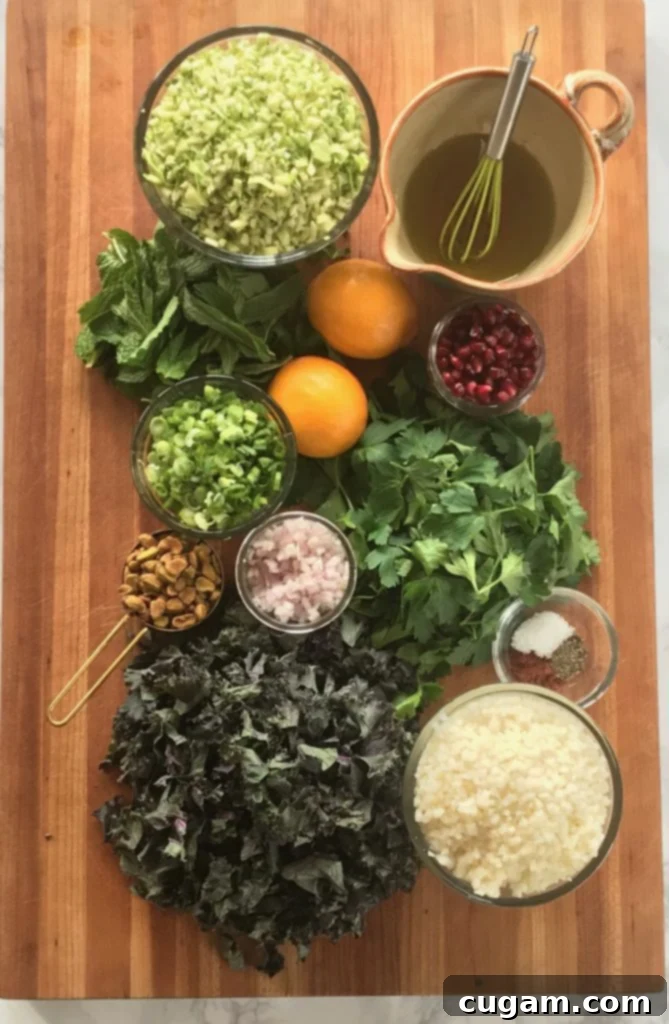
Riced Cauliflower and Broccoli: The Grain-Free Secret to a Nutritious Tabbouleh
For those on a Whole30 journey, looking to reduce grain intake, or simply seeking to boost their vegetable consumption, riced vegetables are an absolute game-changer. Swapping traditional grains like bulgur wheat, couscous, or rice for riced cauliflower and broccoli in your favorite recipes is nothing short of brilliant. This simple modification allows you to significantly increase your daily vegetable intake without feeling like you’re sacrificing taste or texture. The finely processed texture of these riced veggies masterfully mimics that of traditional grains, providing a satisfying foundation for our winter tabbouleh. This ingenious substitution is key to enjoying beloved recipes while staying aligned with your health and dietary goals. You get all the nutritional benefits of cruciferous vegetables – rich in vitamins, minerals, and fiber – seamlessly integrated into a familiar, enjoyable format. Plus, it’s an excellent way to introduce more plant-based ingredients into your diet without a drastic change in your culinary routine. Whether you buy them pre-riced or make them yourself in a food processor, these versatile veggies are an essential component of this healthy, satisfying salad.
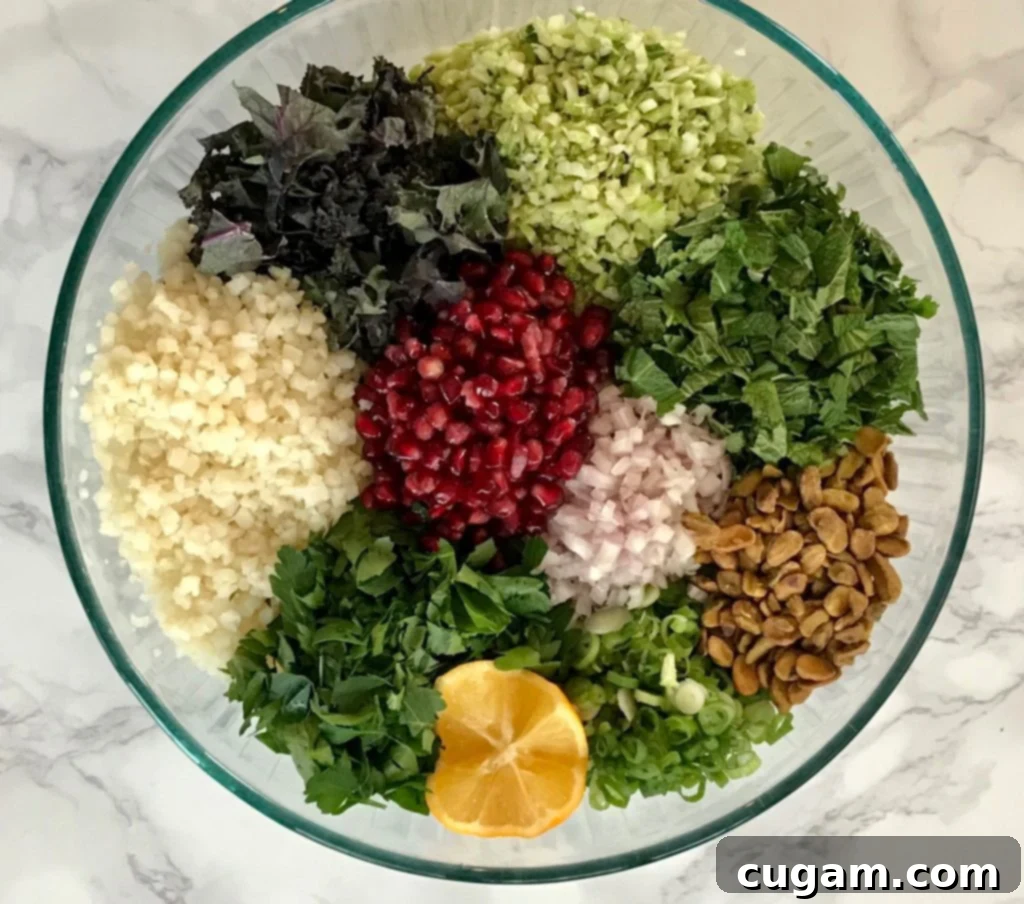
Unleash Your Creativity: Customizing Your Grain-Free Winter Tabbouleh
One of the beautiful aspects of this winter tabbouleh recipe is its inherent flexibility. It serves as an excellent starting point, inviting you to adapt it to your preferences or whatever seasonal ingredients you have on hand. Don’t be afraid to make this salad uniquely yours! For instance, if fresh pomegranates or their vibrant arils are hard to come by, consider unsulfured golden raisins for a touch of sweetness and chewiness. Alternatively, unsweetened and unsulfured dried cranberries or cherries can provide that desirable pop of color and a tart counterpoint. I personally favor pomegranate seeds for their delightful textural crunch and natural sweetness, which comes without the added sugars often found in dried fruits. They also contribute a beautiful jewel-like appearance to the dish.
Similarly, if tree nuts pose an issue due to allergies or dietary restrictions, crunchy sunflower seeds are an excellent substitute for pistachios. Their subtle nutty flavor and satisfying bite will ensure you don’t miss out on that essential textural element. Other options include finely diced celery for a refreshing crunch or toasted pumpkin seeds for an earthy note. This recipe is designed to be forgiving and adaptable, allowing you to experiment with various combinations until you find your perfect balance of flavors and textures. Use these suggestions as inspiration, but always feel empowered to tailor the ingredients to fit your pantry and your personal taste.
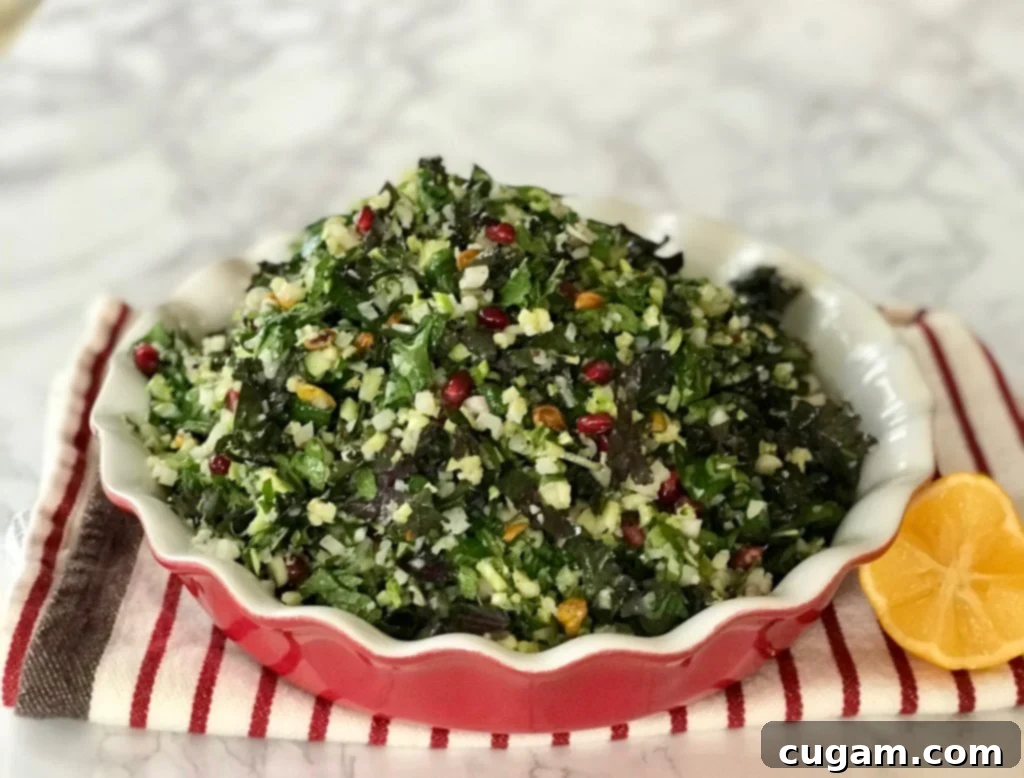
The Zesty Secret Ingredient: What is Sumac?
If you’re new to the world of Middle Eastern cuisine, you might not be familiar with sumac, but it’s an ingredient worth getting acquainted with. Sumac is a vibrant reddish-purple powder derived from the dried and ground berries of the sumac bush. It’s a staple spice in Middle Eastern and Mediterranean cooking, cherished for its unique ability to impart a tart, lemony, slightly fruity flavor to dishes without adding the liquid of lemon juice. My personal obsession with sumac began last summer while regularly making a refreshing nectarine salad. The bright, tangy notes it lent to the fruit were simply irresistible.
Now, as I patiently await the return of nectarine season, sumac continues to be a star player in my kitchen, especially in this grain-free winter tabbouleh. It’s truly no sacrifice at all! Sumac’s ability to evoke the essence of summer with its bright, tangy profile, even when summer produce is out of season, is remarkable. It offers a sophisticated tang that complements the earthiness of the vegetables and the sweetness of the pomegranate beautifully. If sumac isn’t readily available in your spice cabinet, don’t fret! You can achieve a similar tangy effect by adding a bit more lemon zest and/or lemon juice to the dressing. However, I highly recommend seeking out sumac for its distinctive flavor and beautiful color – it’s a wonderful addition to dressings, marinades, or even sprinkled over hummus or roasted vegetables. It adds an authentic touch that truly elevates this winter tabbouleh.
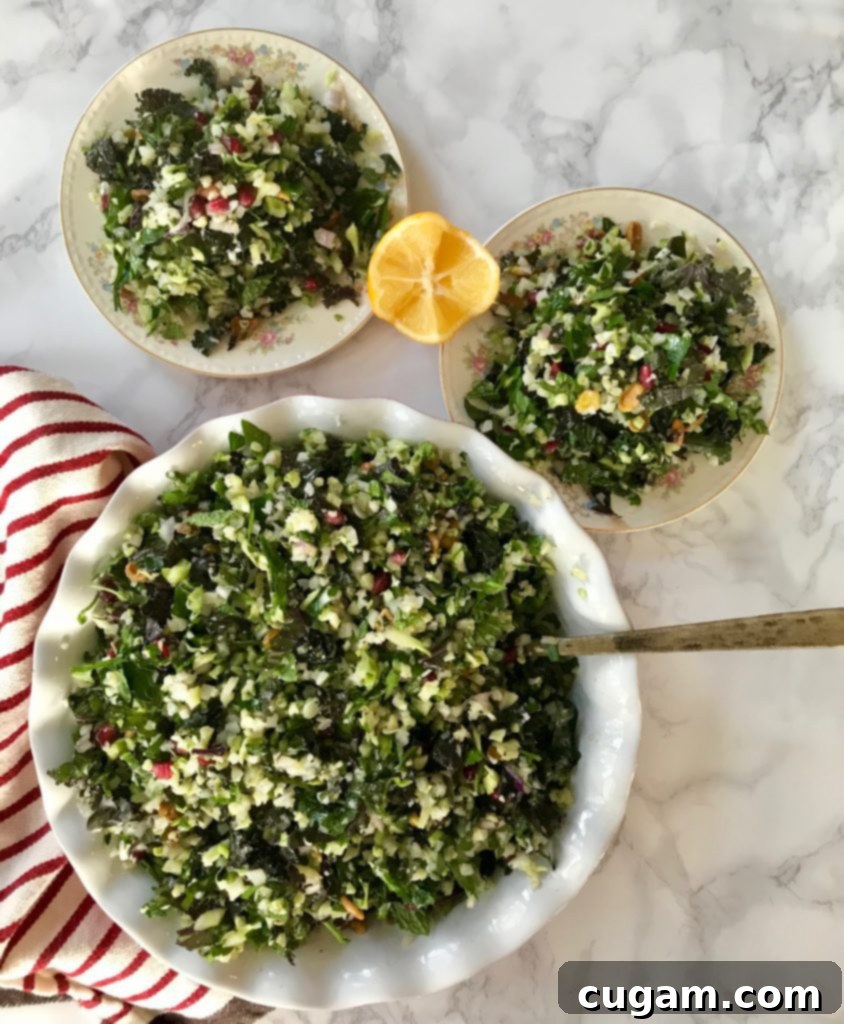
Embracing Seasonal Eating and the Promise of Spring
While I don’t put much stock in Groundhog Day predictions, the current weather forecasts suggest winter isn’t going anywhere fast. However, I am a firm believer in the philosophy of eating in season whenever possible. This means adapting our culinary repertoire to make the most of what nature offers, even in the colder months. It’s time to expand our winter recipes beyond heavy stews and root vegetables, and this delicious grain-free winter tabbouleh is the perfect addition to any rotation. While my summer tabbouleh, bursting with ripe tomatoes, is a personal favorite, I draw the line at eating refrigerator-trucked-in tomatoes that lack flavor and nutrition during winter.
This winter tabbouleh is thoughtfully crafted with an array of fall and winter ingredients – robust kale, crisp riced cauliflower and broccoli, sharp shallots, and vibrant pomegranates – all brightened by the lemony notes of sumac and fresh herbs. It offers a subtle hint of spring, a culinary promise that warmer days are indeed on their way. This salad is not only incredibly flavorful and satisfying as a main course, but it also makes an excellent side dish, complementing a variety of proteins. It’s a versatile, nutrient-dense option that supports a healthy lifestyle, even through the longest winter. Prepare a large batch at the start of the week, and enjoy its vibrant flavors and healthful benefits for days to come!
Why You’ll Love This Grain-Free Winter Tabbouleh
- Healthy & Nutrient-Dense: Packed with fresh vegetables like riced cauliflower, broccoli, and kale, it’s a powerhouse of vitamins, minerals, and fiber.
- Grain-Free & Whole30 Friendly: An excellent option for those avoiding grains or following specific dietary protocols.
- Incredibly Flavorful: The combination of fresh herbs, zesty lemon, and unique sumac creates a truly refreshing and exciting taste profile.
- Easy to Customize: Flexible ingredients allow for personal preferences and seasonal availability.
- Perfect for Meal Prep: This salad holds up beautifully in the fridge for several days, making it ideal for make-ahead meals.
- Brightens Winter Days: A vibrant and refreshing dish that counters the heavy feeling of typical winter meals, bringing a touch of spring to your plate.
Frequently Asked Questions About Grain-Free Tabbouleh
Can I use only riced cauliflower or only riced broccoli?
Absolutely! The recipe suggests a combo for a slightly varied texture and nutrient profile, but you can easily use 5 cups of either riced cauliflower or riced broccoli exclusively, depending on your preference or what’s available. Both options will yield a delicious grain-free tabbouleh.
How long does this winter tabbouleh last in the fridge?
Thanks to the robust nature of the riced vegetables and kale, this salad stores exceptionally well. When kept in an airtight container in the refrigerator, it will stay fresh and delicious for up to 5 days. In fact, the flavors tend to meld and deepen over time, making it an excellent meal prep option.
What can I serve with this tabbouleh?
This versatile grain-free winter tabbouleh can be enjoyed in many ways! It’s hearty enough to be a stand-alone light lunch or dinner. It also makes a fantastic side dish for grilled chicken, fish, lamb, or even alongside hummus and pita (if not strictly grain-free). For a fully plant-based meal, pair it with roasted chickpeas or falafel.
More salad recipes to enjoy:
- Easy Chopped Salad
- Riced Broccoli and Quinoa Salad
- Harvest salad with apple vinaigrette
- Butternut Squash Salad
📖 Recipe
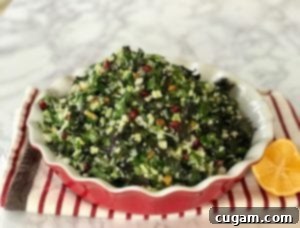
Winter Tabbouleh
Debra Klein
Rate this Recipe
Pin Recipe
15 minutes
15 minutes
Salad
Grain-Free
8
servings
156
kcal
Ingredients
-
5
cups
riced broccoli or cauliflower or a combo. -
1-2
cups
kale * -
1
bunch scallions
thinly sliced -
1
cup
fresh parsley
chopped -
½
cup
fresh mint
chopped -
1
shallot
minced -
⅓
cup
pistachios
chopped -
½
cup
pomegranate arils -
½
teaspoon
sea salt -
½
teaspoon
black pepper -
½
teaspoon
sumac
optional -
2
lemons
zested and juiced -
¼
cup
olive oil -
2
Tablespoons
honey
Instructions
-
Rice the cauliflower/broccoli in food processor or thaw if using frozen riced cauliflower.
-
If you’re using curly kale, wash and dry thoroughly before roughly chopping.
-
In a small measuring cup, whisk together the olive oil and honey. Set aside.
-
In a large bowl, combine veggies, greens, herbs and all spices, including lemon zest and juice. Pour dressing over and mix well.
-
Store in airtight container in the fridge for up to 5 days. Flavors will intensify as they mingle, but salad will not become wilted.
Notes
KALE: any kind will work well. Curly green or purple, lacinato, baby kale. They will all hold up to the dressing if you make this in advance.
MAKE AHEAD: Tabbouleh can be made in advance. Mix oil, lemon juice and honey in a jar with tight fitting lid. Mix everything else together in an airtight container. Store in fridge until ready to mix and serve. Can be served cold or at room temperature.
Nutrition
Serving:
1
g
Calories:
156
kcal
Carbohydrates:
17
g
Protein:
4
g
Fat:
10
g
Saturated Fat:
1
g
Polyunsaturated Fat:
8
g
Sodium:
186
mg
Fiber:
5
g
Sugar:
9
g
Note
The nutrition calculations were done using online tools. To obtain the most accurate representation of the nutritional information in any given recipe, you should calculate the nutritional information with the actual ingredients you used. You are ultimately responsible for ensuring that any nutritional information is accurate, complete and useful.
Did you make this recipe?
Please leave a review below, then snap a picture and tag me @dkhealthcoach or use hashtag #dkhealtcoach on Instagram so I can see it!!
